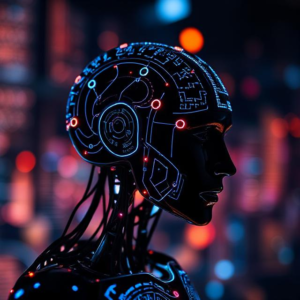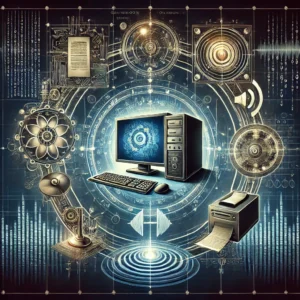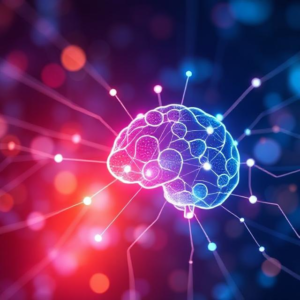Artificial Intelligence (AI) in Electronics is the use of smart systems or computers to help electronic devices “think” and make decisions, much like humans do. AI helps devices learn from data, improve over time, and perform tasks automatically without human intervention.

What is AI?
- AI is a field of computer science that aims to create systems that can perform tasks that normally require human intelligence, such as understanding language, recognizing images, making decisions, and solving problems.
- In electronics, AI is used to make gadgets or systems smarter, enabling them to “learn” from experiences and adapt to new situations.
How Does AI Work in Electronics?
AI works through algorithms and data. Think of it like training a device to become better at a task over time by giving it lots of examples (data). Some common methods include:
- Machine Learning (ML): A type of AI where devices “learn” from data without being explicitly programmed. The more data it gets, the smarter it becomes. For example, a smart thermostat learns your temperature preferences over time and adjusts accordingly.
- Neural Networks: These are computer systems inspired by how the human brain works. They recognize patterns in data and make predictions based on those patterns. For example, facial recognition in your smartphone is based on neural networks.
How AI is Used in Electronics
- Smartphones:
- Voice Assistants: Siri, Google Assistant, or Alexa use AI to understand your voice and respond to commands.
- Camera Enhancements: AI helps your phone’s camera automatically adjust settings for the best photo, like adjusting brightness or recognizing faces.
- Smart Home Devices:
- Smart Thermostats: Devices like Nest use AI to learn your preferred temperatures and adjust the heat or cooling in your home without you needing to do anything.
- Smart Lights: Lights that adjust based on the time of day or your presence in the room, making the home smarter and more energy-efficient.
- Self-Driving Cars:
- AI in self-driving cars helps the vehicle understand its environment, make decisions (like stopping at a red light or avoiding obstacles), and drive safely without human input.
- Wearables:
- Fitness Trackers: Devices like fitness bands or smartwatches use AI to track your movements, learn your exercise routines, and even suggest workouts based on your progress.
- Health Monitoring: AI helps monitor things like heart rate or sleep patterns and can alert users to any issues.
- Robots and Automation:
- Industrial Robots: AI-powered robots can perform tasks like assembling products, sorting items, or even packaging goods, learning from each task to improve efficiency.
- Household Robots: Robots like robotic vacuum cleaners (e.g., Roomba) use AI to navigate around your home, avoiding obstacles and cleaning efficiently.
- Smart TVs and Entertainment:
- Personalized Recommendations: AI helps services like Netflix or YouTube recommend shows and movies based on what you’ve watched before.
- Speech Recognition: Some smart TVs use AI to recognize voice commands so you can search or control the TV without a remote.
Why is AI Important in Electronics?
- Automation: AI helps devices do tasks on their own, reducing the need for manual input and making life more convenient.
- Efficiency: It allows devices to become smarter, learning from patterns and making decisions that are more efficient or helpful.
- Personalization: AI can adapt to individual users, tailoring devices or services to specific preferences, whether it’s through recommendations or adjustments based on user behavior.
- Improvement Over Time: AI-based systems learn and get better over time, improving their performance the more they interact with the environment or the user.
Summary:
AI in electronics makes devices smarter by helping them learn from data and perform tasks on their own. It’s used in many everyday gadgets, from smartphones and smart homes to self-driving cars and robots. As AI improves, we can expect more devices to “think” for themselves and make our lives easier, more efficient, and more personalized.











